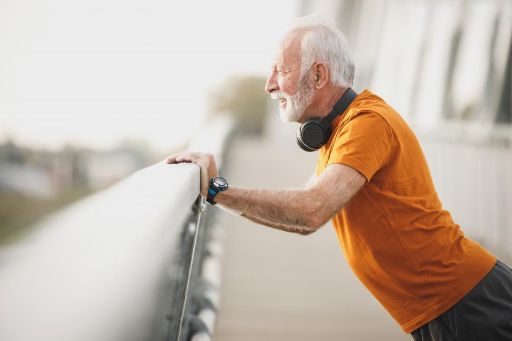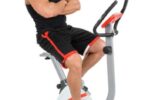As we age, maintaining mobility becomes increasingly essential for a good quality of life. Reduced mobility can lead to a host of health issues, decreased independence, and a lower overall sense of well-being. However, with the right exercises and a little determination, seniors can significantly enhance their mobility and regain the freedom to enjoy life to the fullest. In this comprehensive guide, we’ll explore a variety of mobility workouts tailored specifically for the elderly. Whether you’re a senior looking to stay active or a caregiver assisting elderly individuals with limited mobility, these exercises can make a world of difference.
The Importance of Mobility Exercises for Seniors
Mobility workouts for the elderly are activities that help improve the range of motion, flexibility, and strength of the muscles and joints. They are important for maintaining independence, preventing falls, reducing pain, and improving quality of life. Some examples of mobility exercises for seniors are:
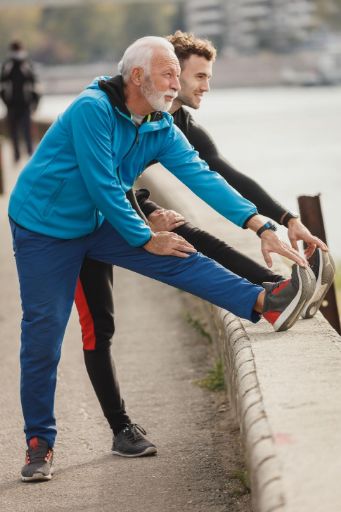
- Stretching exercises: These are gentle movements that help loosen up tight muscles and increase blood flow. Stretching can also improve posture and reduce stress. Some stretching exercises for seniors are neck rotations, shoulder rolls, chest openers, side bends, hamstring stretches, and ankle circles.
- Strength exercises: These are exercises that use resistance to build muscle mass and bone density. Strength exercises can also improve balance and coordination. Some strength exercises for seniors are squats, lunges, wall push-ups, bicep curls, tricep extensions, and chest presses.
- Balance exercises: These are exercises that challenge the stability of the body and the ability to react to changes in position. Balance exercises can help prevent falls and improve confidence. Some balance exercises for seniors are heel-to-toe walks, single-leg stands, toe raises, side leg lifts, and tai chi.
- Cardiovascular exercises: These are exercises that increase the heart rate and breathing rate. Cardiovascular exercises can improve endurance, circulation, and heart health. Some cardiovascular exercises for seniors are walking, jogging, cycling, swimming, dancing, and aerobics.
Mobility exercises for seniors can be done at home or in a gym, with or without equipment. They can be modified to suit different levels of fitness and ability. Seniors should consult their doctor before starting any new exercise program and follow the guidelines of the National Institute on Aging. They should also warm up before exercising and cool down afterwards. They should drink plenty of water and rest when needed.
Mobility Exercises for Seniors
Mobility exercises for seniors are activities that help improve the range of motion, flexibility, and strength of the muscles and joints. They are important for maintaining independence, preventing falls, reducing pain, and improving quality of life. Some examples of mobility exercises for seniors are:
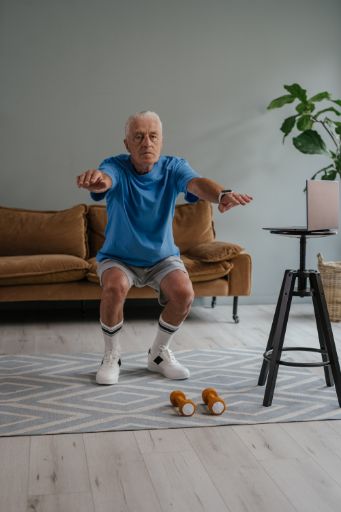
- Gentle joint rotations: These are slow and smooth movements that help lubricate the joints and ease stiffness. They can be done for any joint in the body, such as the neck, shoulders, elbows, wrists, hips, knees, and ankles. To perform gentle joint rotations, you can either sit or stand comfortably and move the joint in a circular motion in both directions. You can do 5 to 10 repetitions for each joint.
- Seated leg lifts: These are exercises that strengthen the lower abdominals and hip flexors. They also improve the flexibility of the hamstrings and lower back. To perform seated leg lifts, you can sit on a chair or bench with your back straight and your feet flat on the floor. You can place your hands on your thighs or on the sides of the chair for support. Then, you can lift one leg up as high as you can without bending your knee or leaning back. Hold for a few seconds and then lower your leg slowly. You can do 10 to 15 repetitions for each leg.
- Wall push-ups: These are exercises that work the chest, shoulders, triceps, and core muscles. They also improve the stability of the shoulder joint and the scapula. To perform wall push-ups, you can stand facing a wall with your feet shoulder-width apart and about an arm’s length away from the wall. You can place your palms flat on the wall at shoulder level and shoulder-width apart. Then, you can bend your elbows and lower your chest towards the wall until your nose almost touches it. Keep your body straight and your core engaged. Push yourself back to the starting position by straightening your arms. You can do 10 to 20 repetitions.
Exercises for Limited Mobility Seniors
Exercises for limited mobility seniors are activities that can help improve the physical and mental health of older adults who have difficulty moving or performing daily tasks. They can also prevent or delay the onset of chronic diseases, such as diabetes, heart disease, and osteoporosis. Some examples of exercises for limited mobility seniors are:
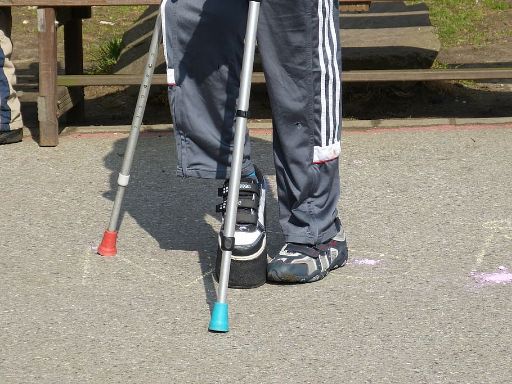
- Seated marching: This exercise strengthens the hip flexor muscles, which are responsible for lifting the leg up. This motion is especially important for advancing the legs while walking and going up stairs. To perform seated marching, you can sit on a chair or bench with your back straight and your feet flat on the floor. You can place your hands on your thighs or on the sides of the chair for support. Then, you can lift one leg up as high as you can without bending your knee or leaning back. Hold for a few seconds and then lower your leg slowly. You can do 10 to 15 repetitions for each leg.
- Seated arm circles: This exercise targets the shoulders and core. They are another great exercise to do while at work, school, traveling, or just when you need to limber up a bit. Arm circles can be done seated or standing- this week’s variety is the seated version. To perform seated arm circles, you can sit in a chair with your back away from the back support. Hold a small object in one hand, for example a ball. Draw a large circle with one hand, lifting the hand up from front and bringing it down from the back. You can do 10 to 20 circles in each direction for each arm.
- Chair squats: This exercise builds shoulder strength and leg strength. It also improves balance and coordination. To perform chair squats, you can grab a chair that won’t go anywhere (Hint: Wheels are a no) and get ready to drop it low! Stand just in front of your chair, facing away from it. Your feet should be shoulder-width apart, with toes pointing straight ahead. Keep your spine neutral and head and chest raised. Engage your core as you bend knees and lower your hips down and back. You can lift your arms out in front for extra balance while you lower yourself down. Gently tap the chair with your butt, but don’t sit down. Squeeze glutes and hamstrings to drive your hips forward and up, returning to the starting position. Try doing 3 sets of 10 reps.
Exercises for Elderly in Wheelchairs
Exercise for elderly with limited mobility in wheelchairs are activities that can help improve the physical and mental health of older adults who have limited mobility. They can also prevent or delay the onset of chronic diseases, such as diabetes, heart disease, and osteoporosis. Some examples of exercise for wheelchair seniors are:
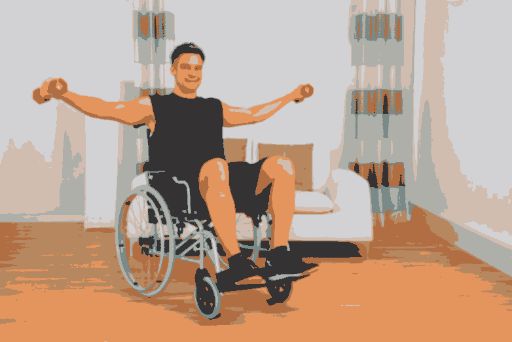
- Wheelchair leg extensions: These are exercises that strengthen the hip flexor muscles, which are responsible for lifting the leg up. This motion is especially important for advancing the legs while walking and going up stairs. To perform wheelchair leg extensions, you can sit on a wheelchair with your back straight and your feet flat on the floor. You can place your hands on your thighs or on the sides of the wheelchair for support. Then, you can lift one leg up as high as you can without bending your knee or leaning back. Hold for a few seconds and then lower your leg slowly. You can do 10 to 15 repetitions for each leg.
- Seated upper body twists: These are exercises that target the core muscles, including the obliques and rectus abdominis as well as the shoulders and upper back. Seated upper body twists are particularly effective at developing rotational strength which can be especially beneficial for athletes in rotational sports like baseball and tennis. To perform seated upper body twists, you can sit on a wheelchair with your feet flat on the floor, cross your arms and reach for your shoulders. Without moving your hips, turn your upper body to the left as far as is comfortable. Hold for 5 seconds. Repeat on the right side. Do 5 times on each side.
- Wheelchair push-ups: These are exercises that work the chest, shoulders, triceps, and core muscles. They also improve the stability of the shoulder joint and the scapula. To perform wheelchair push-ups, you can sit on a wheelchair with your arms by your sides. You can grab the sides or the front of your seat and push your upper body up – and potentially – off the chair. If you have lower core control, lift your legs up toward your chest as you rise for an extra challenge. Lower yourself back to the starting position with control. You can do 10 to 20 repetitions.
Conclusion
Incorporating mobility exercises into your daily routine, regardless of your level of mobility, can significantly enhance your overall well-being as a senior. These exercises can be adapted to your specific needs and abilities, allowing you to maintain muscle strength, improve joint flexibility, enhance balance, and boost circulation. Whether you’re a senior aiming to stay active or a caregiver assisting elderly individuals, remember that consistency is key. By committing to regular mobility workouts, you can enjoy a more active and fulfilling life well into your golden years.

